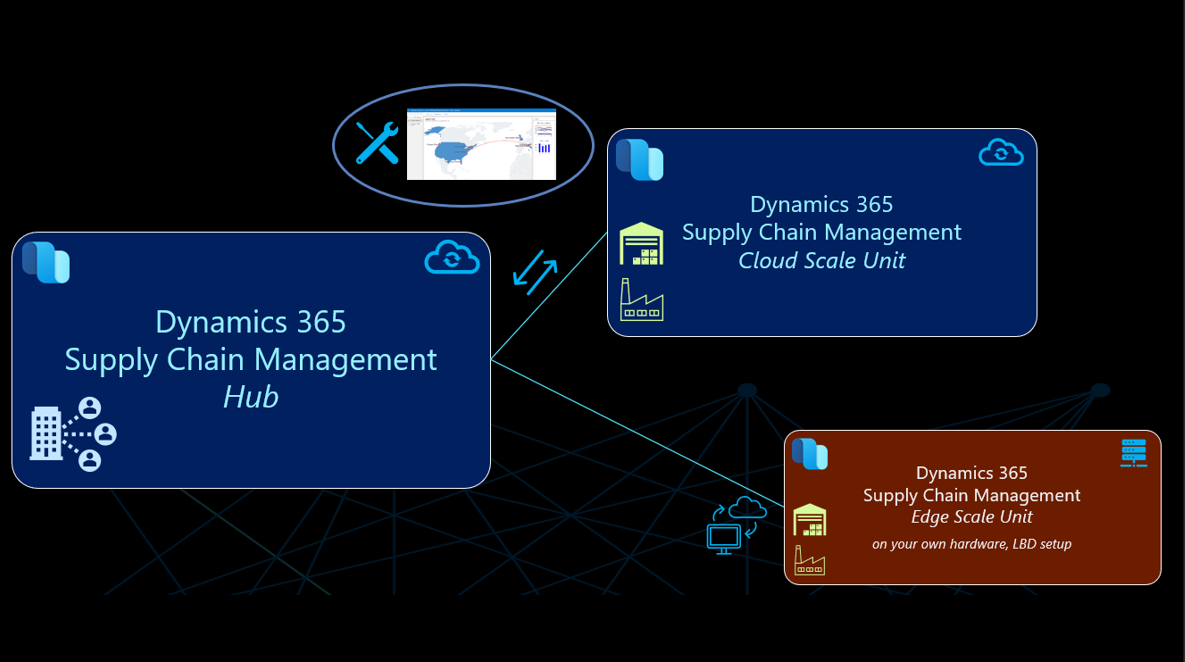Predictions for Microsoft Technology and Business Systems in 2021
Technology has improved and enhanced the multitude of ways that businesses operate all across the globe. Paving the way for innovation and change is Microsoft technology. Through their ongoing investment and development into new technologies and more user-friendly functionality, businesses of all sizes are now able to better connect with their customers and reach their goals.
While not everything that is going to happen in 2021 can be accurately predicted, these are the areas we feel are going to stand out over the next year and where you should invest to benefit your organization.
The Year of “Data”
CDS -> Dataverse maturity
In the not so distant past, you used to buy your ERP solution and create a database locally in your environment. With a multitude of different disparate systems, you would have to take on the cumbersome process of manually generating integrations to connect the data within these systems. Fast forward to today and this process is not only inconvenient, but also unrealistic due to the ever-expanding amount of data and number of apps each business now relies on.
Microsoft’s Dataverse is the foundation that holds data from any number of applications and allows each app that your company uses to easily integrate to each other and share data seamlessly. There are many drawbacks to trying to complete CRM functions in an ERP system and vice versa. Now with the ability to integrate solutions, businesses can use each software app as intended but still gain the benefits of an interconnected end to end solution that doesn’t require any manual entry or duplicate efforts to share data.
Dataverse was previously known as the Common Data Service. While the functionality is solid, we foresee a continued investment into the maturity of the platform.
Dataverse Integrations
The integrations available thanks to the Dataverse enable cross-department and cross-app workflows. For example, now you have the ability to create and generate sales orders, quotes, and autofill contact information within Dynamics 365 Sales. That information then flows directly into Dynamics 365 Business Central or Dynamics 365 Finance so the accounting team can invoice for those goods or services included in the sales order.
Additionally, any third-party developer can create integrations or applications that use data from a table within an application in the Dataverse (such as Sales, Business Central, Finance, etc) and automatically import that information to their newly built app.
- Dataverse management
- Data Lake goes Mainstream
- Data Archival
- Dual Write
Storage limitations were an issue in the past due to the large number of people joining the cloud and not to mention the prices were somewhat prohibitive. Now managing data and storage capacities in the cloud are easier than ever and we will continue to see this become an easier process over the next year.
Many companies really only need direct access to two years of data. Moving forward, companies should incorporate archival processes that take data sets inside of storage space and move that to the Data Lake. We’re going to see a big focus where Data Lakes do become more mainstream as a way to offload data and reduce monthly storage fees.
Additionally, we’re going to see a trend of analyzing what data you actually need within your system and how you want to process transactions. Leveraging SharePoint and other data storage solutions can help your data management become more effective for end-users and for overall cost.
There are advantages to database engines, but if you’re supporting thousands of users in your environment and all of the transactions those users generate, you could be storing that information all within the Dataverse rather than in the direct solution. That is something that we foresee happening in the future.
We also anticipate application development will be built into the Dataverse and extended into the ERP application. This will remove those advanced features from being built into the ERP solution and instead they will be housed in the Dataverse and integrated into ERP.
Machine Learning
- Consumption
- Service expansion
- Integration
- End-user availability
- Unstructured algorithms
Machine Learning will be a big influence this year. Machine Learning will be consumed in different areas and applications than we have seen in the past. For example, Dynamics 365 Business Central already includes late payment prediction that looks at the AR records and can predict when invoices will likely be paid. This functionality has now been added to D365 Finance. We’ll continue to see features similar to this being added across the Dynamics 365 platform including an AI builder in CE, form processes, OCR business image recognition, trend analysis, and more.
We’re also going to see more bi-directional development across D365 in which features in one solution are being added to another. This makes it easy for Microsoft to enhance each part of D365 faster and provide the features required across different departments and teams.
There are existing Power Platform services that provide ML algorithms that are already structured and the end-user identifies what the system should look for. Moving forward we’re going to see algorithms that have the ability to adapt and find variances in data without you having to define the structure. This is incorporated in Power BI to a certain degree now, but we’re going to see this more and more across the Microsoft platform.
This is where repeatable learning functionality will come into play. You’ll be able to train a model initially off a specific set of data. As new variables are coming in they are then added to the model so it continues to become smarter and can account for unknowns.
We’ll see a shift away from having to define everything at the onset and moving to real-time metadata analysis and driving trends from variances and mass quantities of data telling the story. By clustering data, the algorithm will be able to find related groups of data or transactions that follow a pattern and will be able to easily identify the outliers.
With multiple different sources of data, businesses are going to need to have more Power BI specialists. Power BI has such advanced functionality that can be used in a variety of different ways. Companies that invest in Power BI will reap the rewards and have valuable insights into data from nearly every application used.
Web/Cloud/Mobile
- Cloud scalability
- Cloud services
- Web focus
- Mobile device unification
Web, cloud, and mobile are going to be another huge focus area in 2021. The scalability requirements will continue to be enhanced as the Dynamics 365 solutions continue to develop and mature.
App services have changed how we implement software solutions. This will continue to change over the course of the next year as more functionality becomes its own app. For example, customer insights, fixed assets, planning tools – all of those functions could likely become their own stand-alone app available to add-on to a core ERP or CRM solution.
Additionally, we predict that canvas apps, model-driven apps, and portal apps are going to come together and be available in a desktop Power Apps designer.
IoT
- Asset management integration
- Newmarket expansion
- Data management
- Native integrations
IoT is going to increase in focus, especially in the manufacturing space. IoT devices are becoming more affordable and accessible, providing a new opportunity for any size business to take advantage of this technology. These small devices can capture data from any asset on the manufacturing floor and automatically sync that data directly back into Dynamics 365. Once the data is compiled, the machine learning capabilities can alert users to potential problem areas and generate work orders for preventative maintenance, quality testing, and much more. Additionally, these IoT devices can help you calculate the actual cost to produce an item by capturing actual machine run time with no manual effort required.
Micro-Services
- Planning Optimization
- Commerce Inventory
- True Hybrid Architecture
This is a big area that started coming up quite a bit at the end of 2020 and it’s going to be a lot bigger in 2021. Microsoft is working on a planning engine that is external to D365 Supply Chain Management. This will be an external smaller application that draws data from D365 but then provides a replacement to a component within a larger module. We predict that more and more of these micro-services will become available as apps outside of the larger modules of D365 that require no custom integration.
Additionally, we’ll see more related to hybrid architectures where companies can continue to process transactions and processes even if internet connectivity is lost. This will be widely available soon.
End-User Development
- Power Platform Maturity
- Advanced components
- Component store
- SDLM processes
In 2021 we’re going to see even more opportunity given to end users to develop custom applications that integrate with the systems they’re using. Using data technologies like ML, AI, IoT, users will be able to easily create solutions. We’re going to see more third-party options for custom components that end users can use when creating applications. We’ll also see more integrations to third-party services that allow them to connect to industry-specific data sources such as ArcGIS, Dunn, and Bradstreet, and even looking longer term, external services such as satellite imagery.
The other important part of the end-user development story is how the end-user creates, maintains, tests, and deploys the application they have created. We should see improvements in the software development lifecycle that make tools that higher-end development teams use when creating solutions available to end-users in a much easier to use way, eliminating complex feature sets.
Remote Workforce
- Teams features and integrations
- Working from home improvements
- Bandwidth management
- Fault improvement
The way businesses operate has changed dramatically due to the COVID-19 pandemic. Even once the pandemic has passed, many of those updates will remain in place. Because of this, Microsoft will continue to invest in new features and enhancements to its solutions that empower a mobile, remote workforce. We’ll see new advances made to Teams. Additionally, applications will start restricting or eliminating unnecessary features that increase bandwidth. This will make it possible for people to work from home more efficiently where the bandwidth may be more limited compared to the corporate office.
Under the terms of this license, you are authorized to share and redistribute the content across various mediums, subject to adherence to the specified conditions: you must provide proper attribution to Stoneridge as the original creator in a manner that does not imply their endorsement of your use, the material is to be utilized solely for non-commercial purposes, and alterations, modifications, or derivative works based on the original material are strictly prohibited.
Responsibility rests with the licensee to ensure that their use of the material does not violate any other rights.






